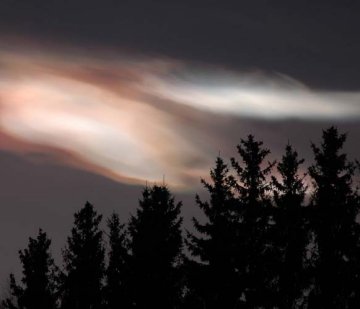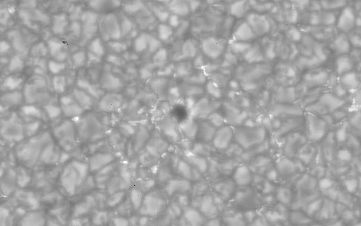 Where's Saturn? Is that a UFO--or the ISS? What's the name of that star? Get the answers from mySKY--a fun new astronomy helper from Meade. Where's Saturn? Is that a UFO--or the ISS? What's the name of that star? Get the answers from mySKY--a fun new astronomy helper from Meade. TWO TOWERS: "Standing over four Earth diameters high, a pair of beautiful prominences are rising out of the sun's western limb," reports Greg Piepol who took these pictures using a Coronado SolarMax90 in his backyard in Rockville, Maryland. Readers with sun-filtered telescopes, take a look! more images: from Francisco A. Rodriguez of Montaña Cabreja Observatory, Gran Canaria - Canary Islands; from J. Fairfull and J. Stetson of South Portland, Maine; from Pavol Rapavy of Rimavska Sobota, Slovakia; from James Kevin Ty of Manila, the Philippines; SURPRISING DISPLAY: Nacreous clouds are supposed to be rare, but the colorfully glowing clouds have been appearing over Scandinavia with astonishing regularity this month. "Last night we enjoyed the third occurrence of nacreous clouds in less than a week!" reports Håkon Dahle of Fjellhamar, Norway. (continued below) 
"The beautiful color play in the clouds kept going for about one hour after sunset, the colors getting more intense as the twilight deepened," he says. "I used a Nikon D70 set at ISO 200 for 1/100s to take these pictures." Nacreous clouds are rare because of the extreme conditions required to produce them: Tiny ice crystals that make up the clouds form at temperatures below -120 F. These same crystals blaze with iridescent color when struck by light from the setting sun. Nacreous clouds ripple across the twilight sky, curling and uncurling in response to atmospheric waves that stretch the rarefied air 9 to 16 miles high. Why are these clouds suddenly abundant? The mystery only adds to the beauty. High-latitude sky watchers, be alert for more in the nights ahead. More images: from Morten Ross of Oslo, Norway; from John Thurmond of Bergen (Sandsli), Norway; from Morten Ross of Oslo, Norway; from P-M Hedén of Vallentuna, Sweden; from Greger Gimseus of Bålsta, Sweden; from Gunnar Lysell of Trosa, Sweden; MICRO-SUNSPOT: Officially, the sunspot number is zero; there are no spots on the sun today. Yet when Japan's Hinode spacecraft photographed the sun hours ago, it found this: 
Call it a "micro-sunspot." Ordinary sunspots are as wide as planets but this dark speck on the surface of the sun is merely as wide as, say, California. A solar physicist would call it a "pore," a small sunspot without the usual circumference of penumbral magnetism. Sometimes pores grow into genuine sunspots worthy of their own number, but more often they rapidly fade away. Indeed, this one may be gone already. Updates are unlikely. | 
